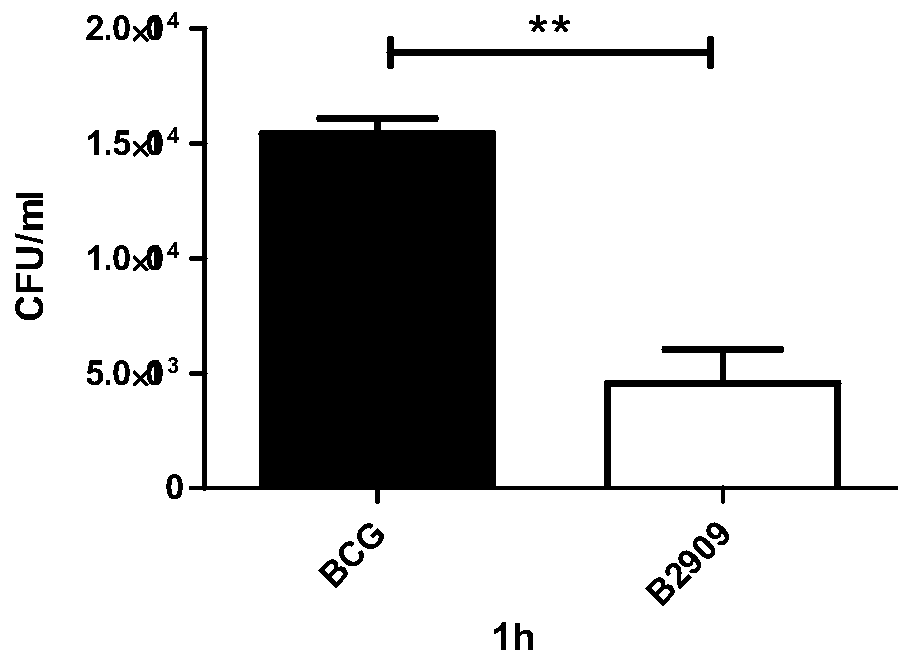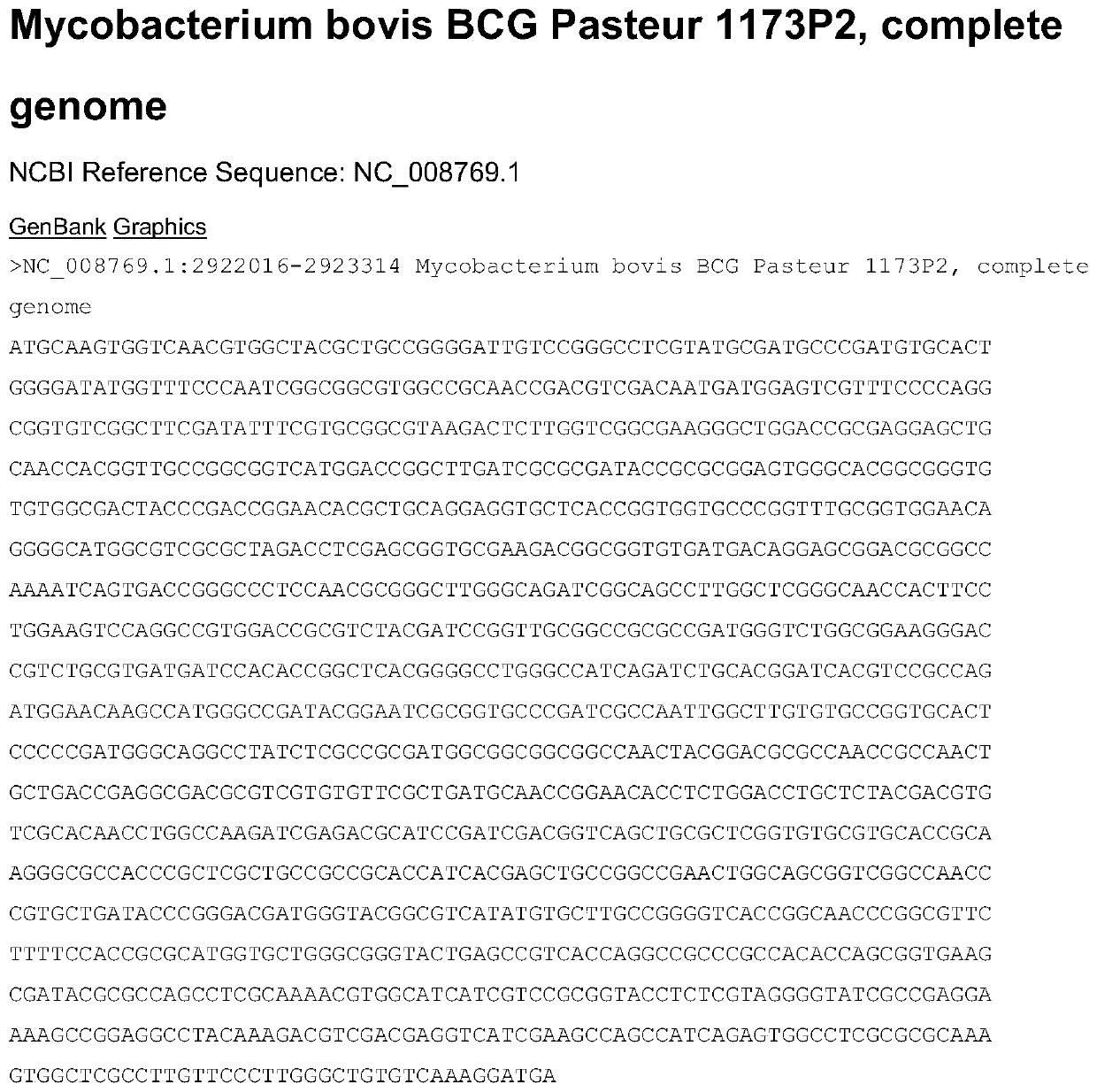Mycobacterium bovis BCG vaccine low-adhesion low-invasiveness mutant strain B2909
A technology of mycobacterium bovis and mutant strains, applied in the direction of bacteria, biochemical equipment and methods, applications, etc., can solve the problems of accelerating tuberculosis, inability to realize immune protection function, and no vaccine, and achieve the effect of reducing the growth rate
- Summary
- Abstract
- Description
- Claims
- Application Information
AI Technical Summary
Problems solved by technology
Method used
Image
Examples
Embodiment 1
[0027] Example 1: Screening and Identification of Mycobacterium bovis BCG Low Invasion Mutants
[0028] 1.1 High-throughput screening of low-invasive mutants of Mycobacterium bovis
[0029] The clones in the Mycobacterium bovis BCG mutant library were transferred one by one to 7H9 liquid medium (7H9 liquid medium was purchased from BD Company) for culture, and the A549 cell (gifted by Professor Luiz Bermudez, Oregon State University, USA) infection model was used to infect the cattle. High-throughput screening of mycobacterial BCG mutant libraries. A549 cells were cultured in a 12-well cell culture plate until they grew into a monolayer and reached 2×10 5 After each well, add bacteria according to the infection ratio of 10:1, at 37°C, 5% CO 2 Add gentamicin (final concentration: 100 μg / ml) to the incubator for 1 hour to kill the extracellular bacteria, and after washing thoroughly, use Triton X-100 (Bio-Rad) to lyse the cells, collect the intracellular bacteria and coat the ...
Embodiment 2
[0035] Example 2: Detection of the adhesion ability of Mycobacterium bovis BCG low-invasive mutants
[0036] In order to verify the adhesion ability of mutants, A549 cells were divided into 2 × 10 5 One per well was spread to a 12-well cell culture plate, and the mutant was inoculated into A549 cells with an infection ratio of 10:1, and the wild strain of BCG was set as a control. The mutants were incubated with A549 cells for 30 min at 4°C. After incubation, wash 3 times with phosphate buffered saline (ie, PBS, 0.01M, pH 7.4 PBS, Hyclone Company), then add 1 mL of 0.025% Triton X-100 to each well, place it at room temperature for 15 min, and use a pipette After the liquid container was blown repeatedly, 100 μL was taken for serial 10-fold dilution, and the lysate with an appropriate dilution factor was evenly spread on a 7H11 plate, and colony counting was performed after culturing in a 37°C incubator for about 21 days. The results showed that the adhesion ability of the B2...
Embodiment 3
[0037] Embodiment 3: Detection of the growth curve of Mycobacterium bovis BCG
[0038] Take the Mycobacterium bovis BCG wild strain and the mutant strain B2909 to inoculate the 7H9 liquid medium at a ratio of 1:100 (volume ratio), and place it at 37°C, 5% CO 2 Continuous culture in the incubator for 27 days, take appropriate bacterial solution every 3 days to measure OD 630 The results showed that the growth rate of the mutant strain was significantly higher than that of the wild strain on the 21st day and the 27th day ( Image 6 ), both increased by 1.2 times. Statistically significant difference. It is suggested that the gene inactivated by the mutant strain B2909 has the function of reducing the growth rate of bacteria.
PUM
 Login to View More
Login to View More Abstract
Description
Claims
Application Information
 Login to View More
Login to View More - R&D
- Intellectual Property
- Life Sciences
- Materials
- Tech Scout
- Unparalleled Data Quality
- Higher Quality Content
- 60% Fewer Hallucinations
Browse by: Latest US Patents, China's latest patents, Technical Efficacy Thesaurus, Application Domain, Technology Topic, Popular Technical Reports.
© 2025 PatSnap. All rights reserved.Legal|Privacy policy|Modern Slavery Act Transparency Statement|Sitemap|About US| Contact US: help@patsnap.com



